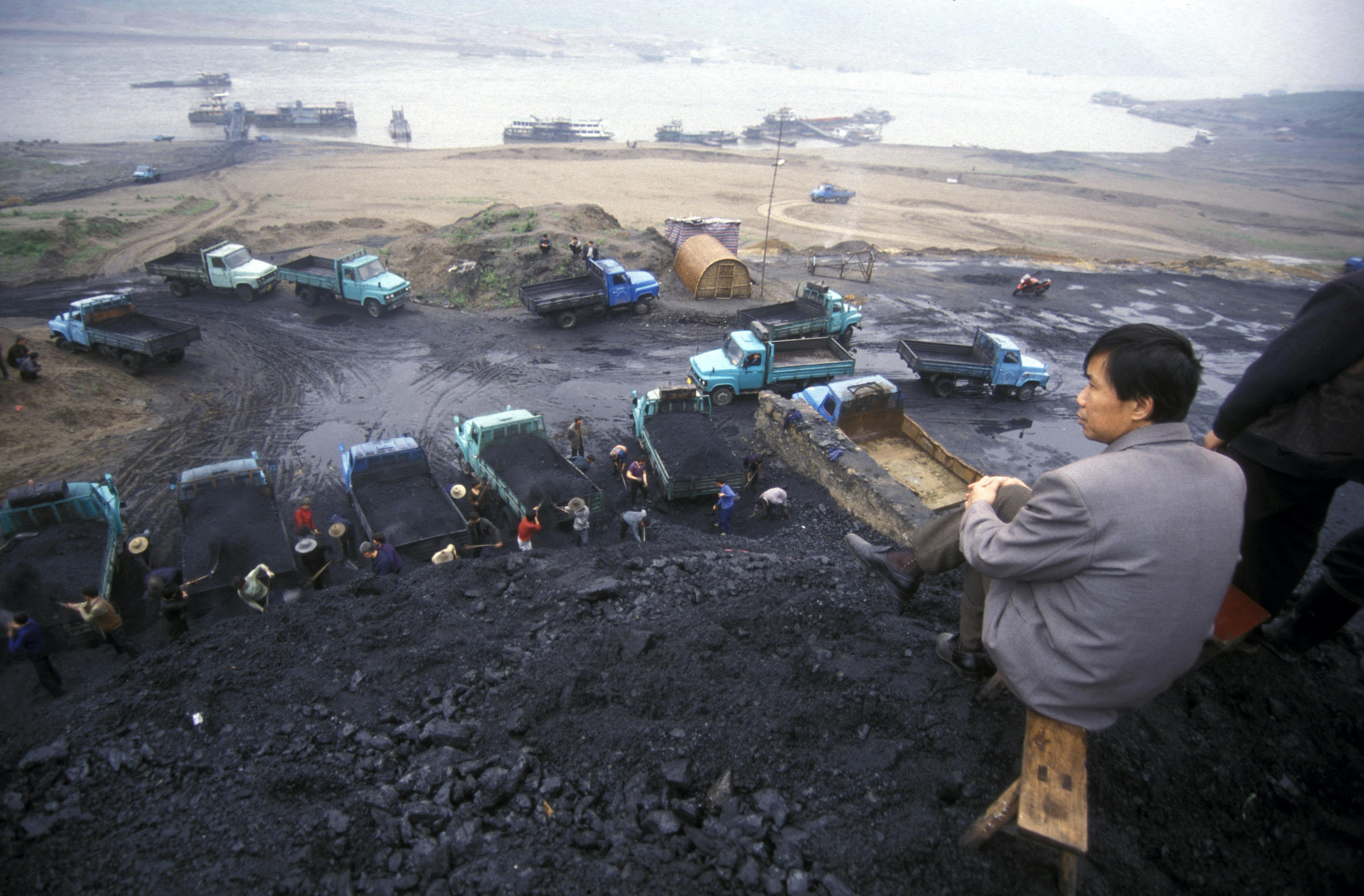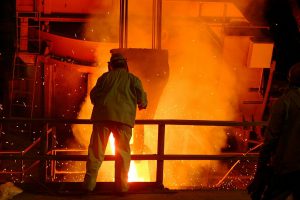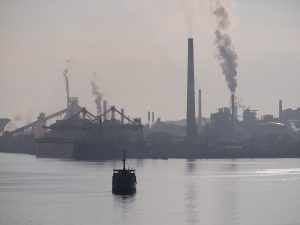Xu Zhaoyuan is a senior figure at the industrial economy department in China’s State Council Development Research Centre, an agency responsible for policy research. In an interview with China Dialogue he said that the agency’s focus is shifting from the reduction in coal output seen 2016 to closing inefficient “zombie” mines in 2017, which are often propped up by local government funding. In this next phase, ensuring there is adequate support for workers who stand to lose their jobs will be essential. The government also hopes to reduce its reliance on interventionist measures, such as removing surplus capacity, to control coal output and let the market play a greater role in the sector’s transition.
China Dialogue (CD): The latest report from the International Energy Agency predicts a structural decline in demand for coal globally, but claims this will be very slow. It stressed that the biggest change will come from China. What are the key coal market trends in China?
Xu Zhaoyuan (XZY): Most Chinese and domestic research bodies expect coal demand to plateau for some time, with no sudden drop in the near future.
But we need to remember that coal demand, and also total energy demand, is closely linked to demand for electricity. Although we may have seen demand from some heavy industries such as concrete and steel-makers reach a peak, domestic customers still make up a large part of electricity demand. And that will increase as we see living standards rise and more electrification. There will be growth for some time to come.
Demand for electricity, including for industry and domestic use, will see slow growth, and coal-fired power will provide the vast majority of that. Coal can’t be replaced in the near future, not by wind or solar, nor hydropower or nuclear. So we’ll still see demand for coal power generation.
CD: 2016 saw huge changes in the price of coal. For example, coking coal has been increasing in price since April 2016, breaking the US$300 (2,050 yuan) / tonne mark in October. Doesn’t that show a reversal in supply and demand trends?
XZY: Short term fluctuations in coal and steel prices don’t mean there’s been a turnaround in supply and demand trends. Overcapacity in coal and steel is actually going to continue for quite some time and supply shortages will be only temporary and local. One feature of coal demand is what economists call “low elasticity” – price changes do not in the short term affect demand, unlike most other products where prices have a greater impact on demand. For example, if one brand of car becomes 10% more expensive, consumers can buy another type. But if coal goes up in price, even significantly, companies can’t just quickly switch to another source of energy, and that means that short term supply shortages can result in large price fluctuations. We can’t look at short term changes in the coal price and deduce that supply and demand trends have reversed.
CD: Should energy prices account for the environmental and social cost of producing coal?
XZY: The production and use of coal, and other sources of energy, involves environmental and social costs, and currently these aren’t fully reflected in energy prices. We think those costs should be included, in the form of taxes, and this will help guide the selection of the most suitable energy mix.
When it comes to the use of coal, our suggestion is that it is used appropriately for large-scale power generation. Much of coal consumption is currently used for other purposes, for small-scale coal-burning which creates several times as much pollution. So currently, while sources of clean energy remain limited and more expensive, sources such as natural gas should be used to replace small-scale coal burning and allow for a certain expansion of coal-fired power in the short term. So although it would seem coal use for power generation is increasing, a large decrease in more polluting uses of coal use means that overall pollution is lessened.
CD: The carbon emissions from coal-fired power can’t be overlooked. How will China fulfil its international emissions commitments?
XZY: We can’t achieve those targets through government-ordered removal of capacity, as long as there’s demand from the economy an enforced reduction in supply won’t work. For example, many different approaches have been taken to reduce investment in steel recently but economic growth means there is demand and capacity has continued to increase. The key to reducing carbon emissions is to take a range of measures: development of clean energy, adjustments to the energy structure, replacement of coal with other sources of energy in small-scale uses. In the near term the government will intervene to help the sector through a difficult period, but we can’t just remove capacity for the sake of it.
In general there’s an overall move to cleaner energy and the public is keen to see greener companies and reduced pollution. The enforcement of environmental standards is very important here, and the environmental tax is sending a very clear policy signal.
Also, market mechanisms should be used to differentiate between companies. Those which meet emissions standards and are efficient should be more profitable than those which are inefficient and break the law.
CD: When we look at specific measures to reduce coal output, what drove the governement to limit coal mines to 276 days of operation in 2016?
XZY: There were sustained falls in the price of coal in late 2015 and early 2016, but market mechanisms were failing. In theory, if the price of coal drops coal mines lose money, and output should be reduced to cut those losses. But many companies actually boosted production to maintain cash flows. The combination of falling prices and increasing output sent the industry into a downward spiral. Therefore the government enforced the shutdown of surplus capacity, which stabilised the market and stopped that spiral.
The nature of the coal industry means that some big firms, particularly state-owned enterprises (SOEs), are labour intensive and dominate the local economy. If those companies are at risk the livelihoods of many miners are threatened. In many places an entire city or town may rely on one coal firm. That firm going bust can do huge damage to the entire local economy and create social problems.
In early 2016 most coal firms were suffering losses, particularly the SOEs, which have larger work forces. Some coal firms hadn’t been able to pay wages for months, many were facing debt crises or even closure. The government saw that the coal sector was a risk to the entire economy and took decisive action, removing surplus capacity.
CD: As the coal market changes, how will the government tackle capacity reduction in the future?
XZY: Coal prices have recovered and most companies are profitable again, so there’s been an overall improvement in how the sector is working.
The year ahead won’t see any change in overall efforts to reduce capacity. But the core aim of the policy isn’t just to reduce output to a particular level, it’s to steer the sector through a difficult time and return it to healthy growth. Market demand naturally fluctuates, and the government has no way to predict what demand will be, so output targets and actual demand will never match up exactly.
Looking forward to 2017, it was proposed at the Central Economic Work Conference that “zombie companies” – companies which are inefficient, have poor technology, and or don’t meet safety standards – be removed. The government should step back and give the market more room to regulate output.
CD: For the market to play its role price signals have to be meaningful. This means that inefficient firms must be allowed to reduce their output or go bust. However, in 2016 these firms received cash injections from the banks and the local government, leading them to acquire so much debt that they became “too big to fail.” So how can market mechanisms come into play?
XZY: First, the removal of inefficient firms is essential if the market is going to play an effective role, but a welfare safety net for unemployed workers is also needed. The government should bear the burden. For example, local government should be focused on creating better welfare and reemployment, rather than having SOEs take on extra responsibilities. Firms which are not competitive will only close down if there is a welfare safety net, otherwise they become “zombie” firms.
Second, legislation should be used to level the playing field. There are strict safety, quality and emissions rules for coal mining, but some companies still manage to get out of paying for environmental protection and restoration, which gives them an unfair advantage. We should have cross-regional inspections to ensure firms take on the appropriate responsibilities and costs, which will allow the best of them to flourish.
Third, coal should be price properly; and not based on government adjustments to supply and demand, but on a price that reflects the external costs of coal.








